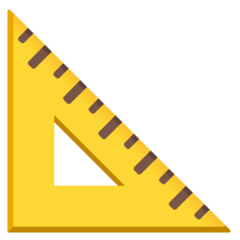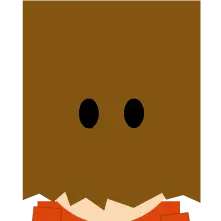I’m working on a project with a 19x26" panel that I realized after gluing still has a bit of a twist in it across the three boards. In the past I’ve simply sanded down panels, but I think this one is going to require a plane. Thing is, I’m still fairly new to woodworking and don’t have any planes yet so I’ve been doing my homework on which to get.
I generally avoid buying junk tools, especially Chinese junk so that rules out a bunch of the options. Plus, I assume I’d find it difficult to tune up an old one since I’m not knowledgeable enough about them yet. Because of that I’ve ended up going straight to the top and considering either Lee Valley or Lie-Nielsen.
Given that my immediate task is to flatten a panel I was thinking either a #5 or #5-1/2 high angle jack plane knowing that I’d likely expand the collection in the future with a smoother as well, but for now I’m only looking for a first one.
Does that make sense for me? If so, any tips on deciding between the #5 and #5-1/2? The #5 is a bit cheaper, but it seems like the slightly bigger #5-1/2 would be good if I followed it up with a #4 in the future. Specifically I’ve been looking at:
It’s relatively simple, if tedious, to clean up an old plane. Paul Sellers has a great video about it. #4 should be fine for 19x26".
No reason to drop $425 on a hand plane, especially if you’re just starting out. Find someone with a 20" planer you can use for 10 minutes (local maker space or FB groups are good places to check), or buy a few used planes at an auction/FB marketplace.
Stumpy Nubs likes the Woodcraft hand planes, and they’re about 30% less than the lie-nielsen/leevalley ones, still a lot of money, but they’re also a lot less work to set up than a used one.
https://www.woodcraft.com/categories/planes
I personally got a couple old Stanleys and cleaned them up, but it took quite a bit of effort. Wasn’t particularly difficult in terms of skill, but it wasn’t just a 20 minute job either. Depending on what you get there’s a lot of cleaning, adjusting, sharpening, etc. And getting it on eBay means you’re never going to be 100% sure what you’re in for.
It’s fine doing it that way, but you need to be aware of what you’re getting into. Sometimes if you have the $ to spend on a hobby, it’s worth the cost to get a tool and finish the project.
I looked at WoodRiver, but if I was going to buy a new plane I’d rather buy something American or Canadian made rather than from China. I’m always happy to pay a marginal premium if it means supporting domestic manufacturing.
But yeah, that’s my fear if buying something used. I don’t know what I’m looking for in terms of how much work it would take nor do I have the experience to tune it up properly.
4 or 5 of my planes are from eBay, the other 3 are from Facebook. Definitely not a 20 minute job, but under 2-2.5 hours each, and I rather enjoy the process of restoring tools. I get that it’s easier, and no shame in spending some more money on nice tools you don’t have to sink time into
Personally, I’d buy a used planer and a jointer before dropping close to $500 for a hand plane.
It’s not so much that I’m just starting out, but more that I’ve been putting off buying a plane while I built out the rest of my shop and always found a way to get something done without buying one. But I think I’m now at the point where it’s time to make that jump. But I also recognize that I don’t yet have the knowledge to know what I’d be buying used, which gives me pause on going that route lest it turn into a project itself.
I was thinking that I’d like something initially I could use for planing other projects too so that’s why I was leaning towards a #5. Do you think it’s worth starting with a #4 even if I wouldn’t be primarily using it as a smoother?
I got by with a #4 and a block plane for the first few years. You can’t really go wrong with an older Stanley. Generally, as long as they aren’t too pitted, any plane will do the job. Cheaper ones will be more of a pain to sharpen, older ones will take more clean up, but it’s more important to be decent at sharpening than it is to buy a fancy new plane. A properly sharpened cheap plane will outperform a dull expensive plane.
I would recommend buying a Stanley Bailey #5 from one of the old tool dealers online in fettled user condition. Read up on the use and adjustment of the cap iron (chipbreaker). If you search for David weaver cap iron you’ll find a lot of information.
No matter what plane you buy you’ll have to have your sharpening skills at a high level for it to be useful.
Any examples of old tool dealers I should look at? I briefly tried poking around Ebay, Craigslist, etc. and was only finding stuff that would have required much more work than I’m currently capable of.
https://www.mortiseandtenonmag.com/blogs/blog/sourcing-antique-hand-tools has a lengthy list, with everything from the ridiculously-priced to the reasonable.
Thanks! That’s a great list.
I’ve had good luck with olde river hard goods. He’s on ebay, most social media and has an email list. Pay attention to the descriptions.
Thanks! I’ll have a look.
I have both Lie Nielsen and Veritas planes and both are wonderfully made and a pleasure to use. Neither needed any work out of the box.
A 5 or 5 1/2 is a good first plane. You’ll be able to flatten boards like you want and joint smaller boards as well. Flattening can be quite a bit of work where the lighter, smaller 5 will allow you to work longer without needing a break. I do like the extra weight of the 5 1/2 when using it with a shooting board though, especially end grain.
Chris Schwarz recommends a low angle jack as a first plane for beginners.
I’d go with a 5-1/2 instead of a 5. Its longer length suits it to larger jobs so you might as well take a wider shaving.
I use a 5-1/2 for similar flattening jobs and have never wished for it to be more narrow.
Cool, good to know I’m on the right track then. Now if only the 5-1/2s weren’t so much less common than the 5s.
I have the Wood River model, and kinda regret that it’s from China. Especially for the price!
deleted by creator
Consider an electric hand planer. It serves the same function as a scrub plane with less effort. A new one is cheaper than a new hand plane.
Yeah I was looking at those too, but the feeling I got was that they were more for construction work or jobs that require removing a lot of material quickly and not necessarily what I’d want for fine adjustments of boards. Is that fair to say?
They are for rough work, to get you to sanding ready. They can take as little as 1/64th of an inch (0.4mm) so they can get you close to level.
But they will not do the work of a smoothing plane. You will still need either a smoother or a sander to get that last little bit.



